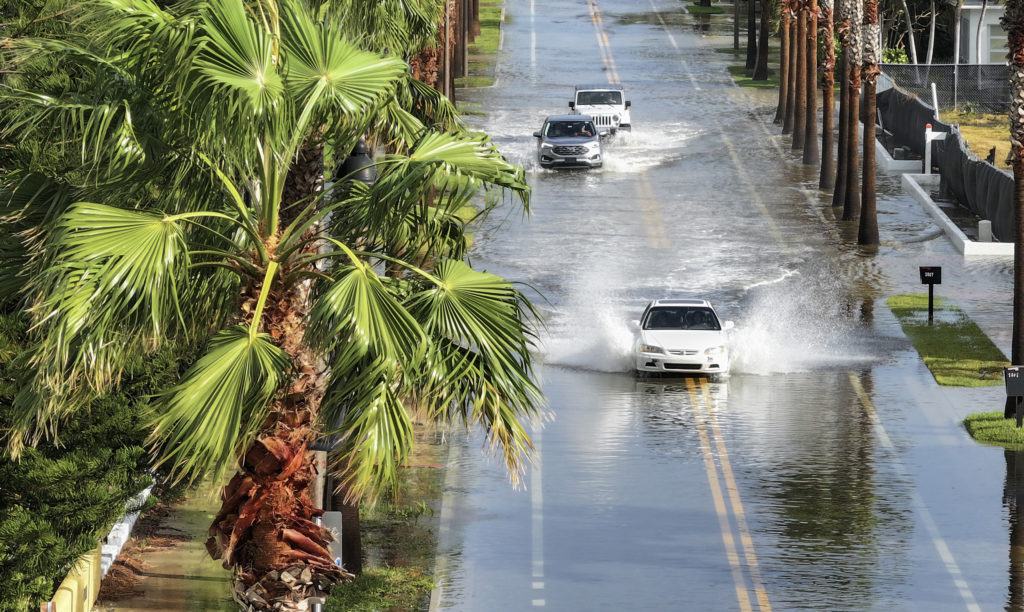
Thursday, 26 September 2024
As the remnants of Hurricane Helene continue to dissipate, affected communities across the Atlantic and Gulf coasts are beginning the long process of recovery and rebuilding. The Category 4 storm, which made landfall earlier this week, left a trail of destruction in its wake, with widespread flooding, power outages, and damaged infrastructure reported in multiple regions.
Helene brought torrential rain, hurricane-force winds, and dangerous storm surges, with some areas experiencing record levels of flooding. The hardest-hit areas include coastal towns in Louisiana, Texas, and Mississippi, where entire neighborhoods were submerged in water. Local authorities have reported severe damage to homes, roads, and bridges, leaving thousands of residents displaced.
Emergency response teams were quickly deployed to the affected areas, with rescue operations continuing to pull stranded residents from flooded homes. Federal disaster relief efforts are now in full swing, with the Federal Emergency Management Agency (FEMA) coordinating aid distribution, including food, water, and temporary shelters for those displaced by the storm.
Hurricane Helene also caused massive power outages across the region, leaving millions without electricity. Utility companies are working to restore power, but in many areas, the extent of the damage to the grid means it could take weeks before services are fully restored. Downed trees and debris have obstructed roads, hampering the efforts of utility workers and emergency responders alike.
Major transportation hubs, including highways and airports, have also been impacted. Authorities have issued travel advisories, and several airports remain closed due to flooding and damage to runways. Rail services have been suspended in some areas, adding to the logistical challenges of delivering aid and supplies.
Rising Concerns Over Public Health and Safety
In the wake of the storm, public health concerns have emerged, particularly related to the contamination of water supplies and the spread of waterborne diseases. Health officials are urging residents to avoid drinking tap water unless it has been boiled or otherwise treated, as flooding has compromised many municipal water systems.
The risk of mold growth in water-damaged buildings and homes is also a major concern, with officials warning that prolonged exposure to mold can lead to respiratory issues and other health complications. Cleanup crews are working to remove debris and begin drying out buildings, but the scale of the devastation means this process will take time.
The Economic Toll of Helene
Preliminary estimates suggest that the economic cost of Hurricane Helene could reach into the billions of dollars, with industries ranging from agriculture to tourism suffering significant losses. In coastal areas, fishing fleets have reported extensive damage to boats and equipment, while farmland has been submerged under floodwaters, jeopardizing crops and livestock.
Insurance companies are bracing for a surge in claims as homeowners and businesses assess the damage. The federal government is expected to provide financial aid to help affected communities rebuild, but it could take years for some areas to fully recover from the storm’s impact.
As the immediate threat of Hurricane Helene passes, attention is now turning to the long-term recovery effort. Federal, state, and local officials are coordinating disaster relief and rebuilding plans, with an emphasis on ensuring that future infrastructure is more resilient to extreme weather events.
Environmental experts are also calling for stronger climate change adaptation strategies, as the frequency and intensity of storms like Helene are expected to increase in the coming years. Communities are being encouraged to implement flood defenses, update building codes, and invest in more sustainable infrastructure to reduce the risk of future devastation.
In the meantime, recovery efforts are focused on meeting the urgent needs of those affected by the hurricane. The road to rebuilding will be long, but with the support of federal aid and the resilience of local communities, the regions hit hardest by Hurricane Helene are determined to come back stronger.




